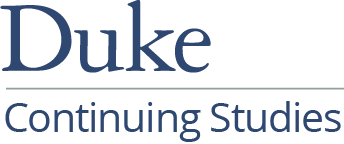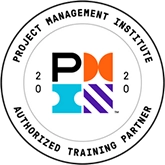The Morning After: How to Make Training Stick After the Event
G Got too much on your plate? Most people do. Here are a few tips for getting those priorities under control.
Got too much on your plate? Most people do. Here are a few tips for getting those priorities under control.
BetaCorp depends on marketing to build corporate image and awareness within key channels. Yet, the VP of Marketing is in a difficult position. He has six lines of business clamoring for attention and arguing over whose project comes first. To make matters worse, staffing levels remain constant while expectations rise.
The pressure to perform, along with the competing demands from customers, creates a stressful and confused environment. Managers are pulled in multiple directions, fitting in projects for their favorite customers, ignoring other projects, and working long hours. Nothing seems to get done properly and staff is on the verge of burnout.
Luckily, there are ways to manage multiple priorities effectively. Here four of the most effective actions you can take to manage your organization's priorities.
- Clarify the organization’s value proposition. The organization’s value proposition is its reason for existence. It describes how the organization adds value to the larger company. Is the organization expected to drive cost savings, improve customer satisfaction, create new revenue streams, or increase revenue in existing streams? Perhaps all of the above? If so, then what are the priorities within those expectations? Does customer satisfaction trump revenue? Or are cost savings what's really important these days?
 The value proposition serves as your anchor amidst the tumult of organizational life. Once you have clarity with your executive team on the true value of your organization to the enterprise, you can identify whether a proposed initiative or project fits. Some will clearly match. These are the high value projects that go on top of the priority list.
The value proposition serves as your anchor amidst the tumult of organizational life. Once you have clarity with your executive team on the true value of your organization to the enterprise, you can identify whether a proposed initiative or project fits. Some will clearly match. These are the high value projects that go on top of the priority list.- Other projects won’t align with the value proposition. Deciding how to handle these projects can be tough, especially if their sponsors are particularly committed to them. However, if leaders have done their ground work and gained consensus with the executive time on the value proposition, telling a customer “next quarter,” “next year,” or, even “no” becomes much easier.
- This is exactly what happened with BetaCorp’s Marketing VP. He confirmed with the executive team that the value of marketing was to build corporate image and awareness within key channels. With the team’s agreement and support, he renegotiated priorities with internal customers, dropping the non-value added projects clogging his portfolio.
- Create logical, fact-based, prioritization processes for investments. Unless you’re lucky enough to be in an organization with unlimited resources, there will always be tension between who gets what they want and who doesn’t. The best organizations prevent destructive politicking by creating logical, fact-based prioritization processes for investments.
- These processes, based on the value proposition, strategies, and goals of the organization, are transparent. Anyone in the organization can see exactly how decisions are made and how funds are allocated. Projects can be evaluated for potential return on investment, cost to implement, match with resource capabilities, or other pre-set criteria. A weighting system allows criteria to receive varying degrees of importance depending on organizational goals.
 Develop structures that identify and resolve resource allocation conflicts. Internal organizations inevitably butt heads despite clear prioritization processes. These conflicts are not necessarily negative; often they direct attention to important issues. However, when the conflicts stay under the surface or aren’t managed well, they can create nagging and disruptive problems.
Develop structures that identify and resolve resource allocation conflicts. Internal organizations inevitably butt heads despite clear prioritization processes. These conflicts are not necessarily negative; often they direct attention to important issues. However, when the conflicts stay under the surface or aren’t managed well, they can create nagging and disruptive problems.
- One team, for example, was pulled between requests from two different departments. Instead of resolving the issue, the team worked for both departments, sacrificing quality in favor of responsiveness. The problem wasn’t discovered until a department review session surfaced serious issues in the projects for both departments. Beneath these issues were deeper organizational concerns: managers and individual contributors reluctant to negotiate with their clients, customers who had learned that they could get what they wanted by going directly to the provider and skirting the formal prioritization system, and tendency to solve problems by working harder, not smarter.
- In this case, there was a structure for identifying priority conflicts: the department review session. However, waiting for the next meeting may be impossible given the pain felt by over allocated employees feel. Ideally, employees should be able to talk with their managers. But are their managers accessible? Do employees even know who their manager is? Believe it or not, in some companies, people don’t know.
- Internal structures, such as resource reviews, continuous process improvement efforts, weekly tactical meetings, and daily huddles, identify and resolve resource allocation conflicts before they interfere with product quality and service delivery. They also shape a culture in which people can freely raise issues and proactively solve problems.
- Create structures to encourage employee collaboration. Organizations rely on colleagues across department lines in order to get things done. Yet, relationships between organizations are often strained, with both parties complaining about lack of understanding and responsiveness. In their dedicated efforts to service customers, teams are often too busy or too distracted to share lessons learned with colleagues.
- Creating simple structures that encourage employee collaboration can make the difference. Collaboration and knowledge sharing opportunities prevent teams from reinventing work already begun by others. Five proven techniques for building effective collaboration are listed below. Which are the best matches for your organization?
| Method | Description |
| Best Practice Forums | Periodic meetings that bring teams together to share best practices that they have developed during the course of their work. |
| Communities of Practice | Networks of individuals who all have an interest in a certain topic (for example: a line of business, type of work, emerging technology, or professional certification) who convene to share information and ideas. The venue can take the form of in-person discussions, online data repositories, or colloquiums. |
| Knowledge Databases | Online repositories of organizational knowledge. Accessible to project teams, repository data identifies project lessons learned, explains methodologies, and presents helpful tools and templates. |
| Pulse Groups | Periodic meetings of randomized groups of employees. Facilitated by a neutral third party, the Pulse Group provides a time for employees to identify barriers to success, brainstorm improvement ideas, and dialogue openly with organizational leadership. |
| Task Force | A group of cross-functional employees brought together for a limited amount of time in order to solve a high-profile or business-critical problem. |
Where to Begin?
To take the first step towards getting competing priorities under control, begin where you have the most leverage. For leaders, this may mean more emphasis on clarifying the value proposition with the executive team, creating an effective prioritization process, or formalizing the resource allocation and review process. For a manager or individual contributor, this may mean pulling teams together to share lessons learned. What’s most important is to jump in and begin managing your organization’s priorities.
About the Author:
Maya Townsend, MSOD, is a Trainer and Consultant for Corporate Education Group. Maya is also Founder and Lead Consultant for Partnering Resources, where she specializes in leadership, strategy and collaboration. During her career, Maya has successfully designed and facilitated training programs to over 5000 people in groups of 3 to 130 in the public and corporate sectors. Highly intuitive, analytical, and imaginative, Maya works at all levels, from CEOs to line workers, to develop the relationships, ideas, connections, and interdependencies that shift an organization to the next level of productivity and performance.
For more information on this topic, as well as how Corporate Education Group can help power your organization’s performance, contact us via email or call 1.800.288.7246 (US only) or +1.978.649.8200. You can also use our Information Request Form!


- ©2026 Corporate Education Group, operated by CEG Operating Company, LLC. All Rights Reserved.
Privacy Policy | Terms and Conditions - Corporate Education GroupSM and Learning That Powers PerformanceSM are service marks of Corporate Education Group, Inc., PMI®, PMP®, CAPM®, PgMP®, PMBOK®; and the PMI®; Registered Education Provider logo are registered trademarks of the Project Management Institute, Inc. CBAP® and IIBA® are registered trademarks of International Institute of Business Analysis. All other trademarks mentioned on this site are property of their respective owners. All rights reserved. CEG is an approved Authorized Partner within the Blanchard Authorized Partner Program and is licensed to market, sell, and train SLII®.
